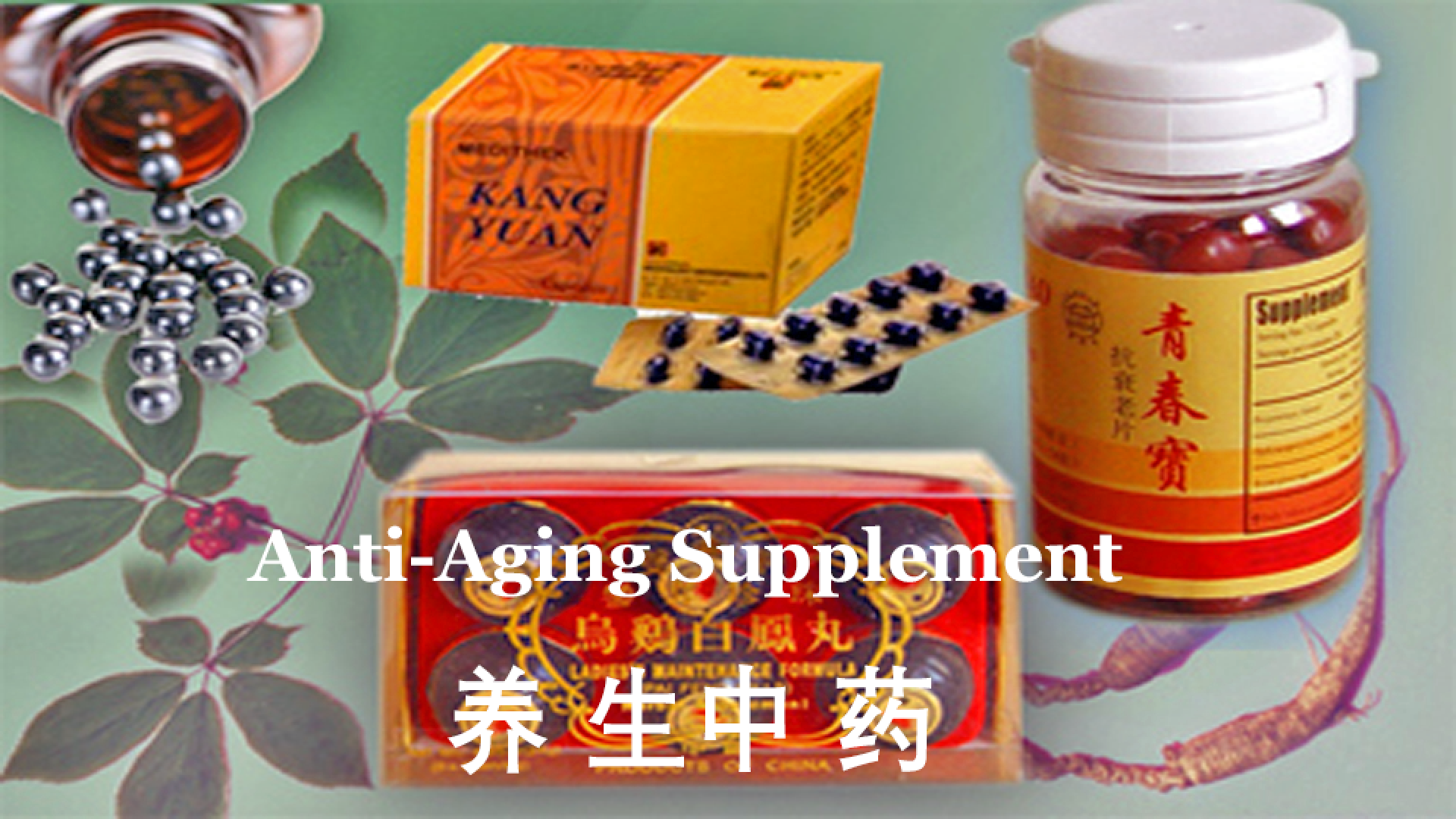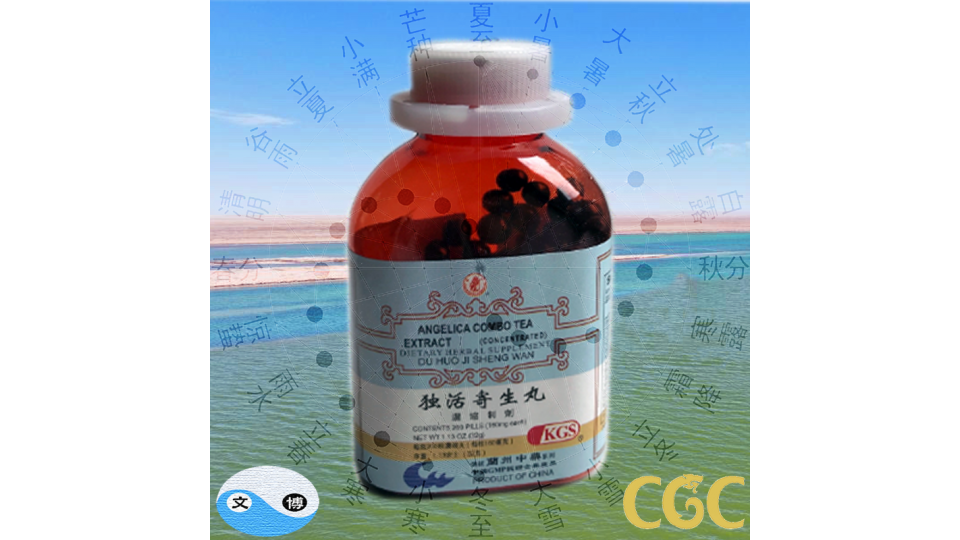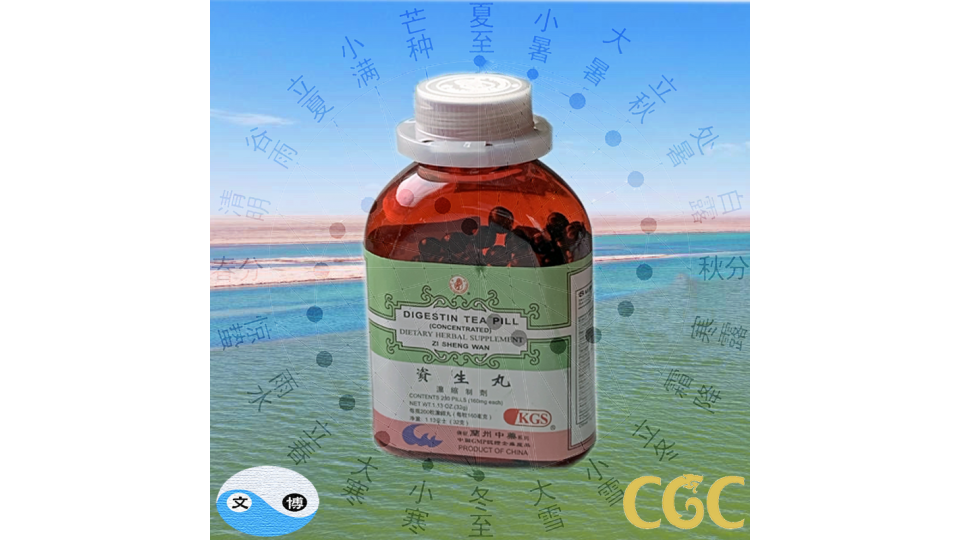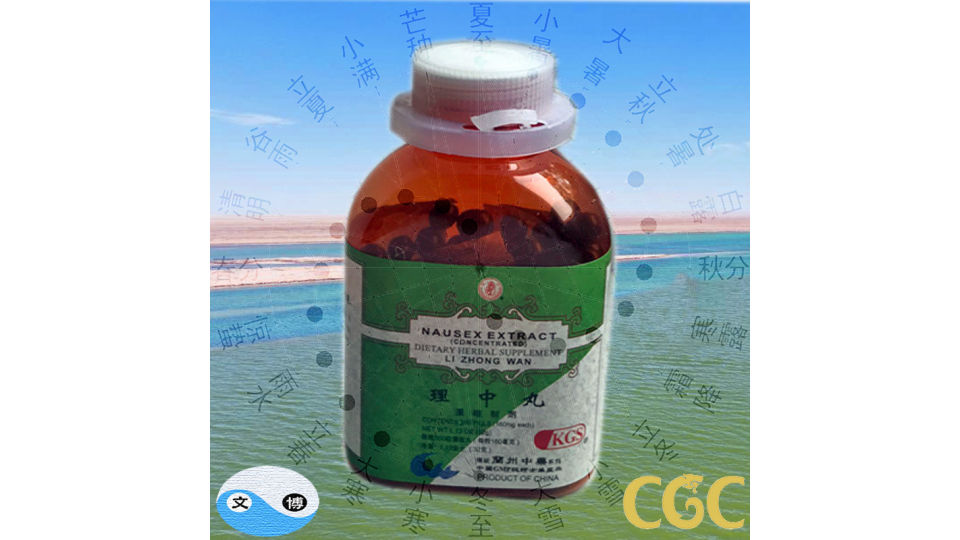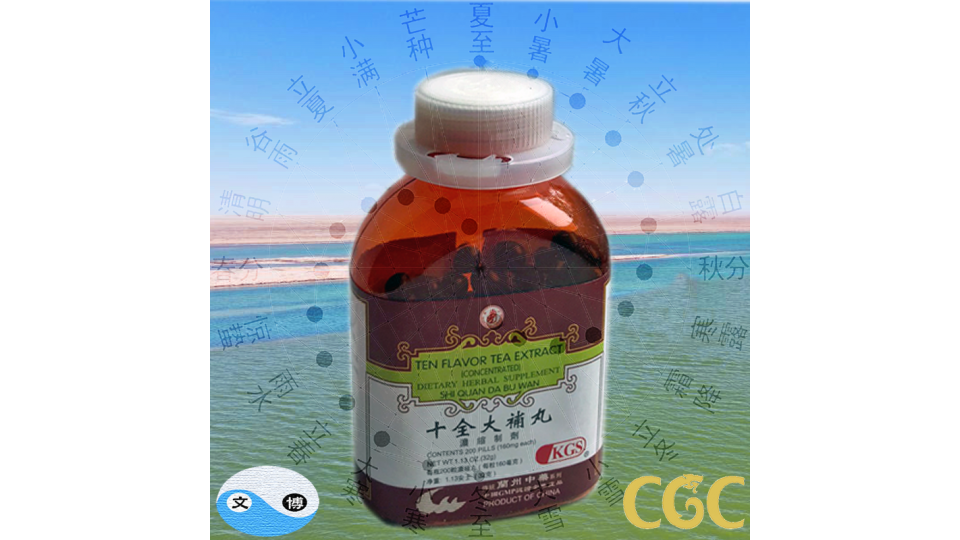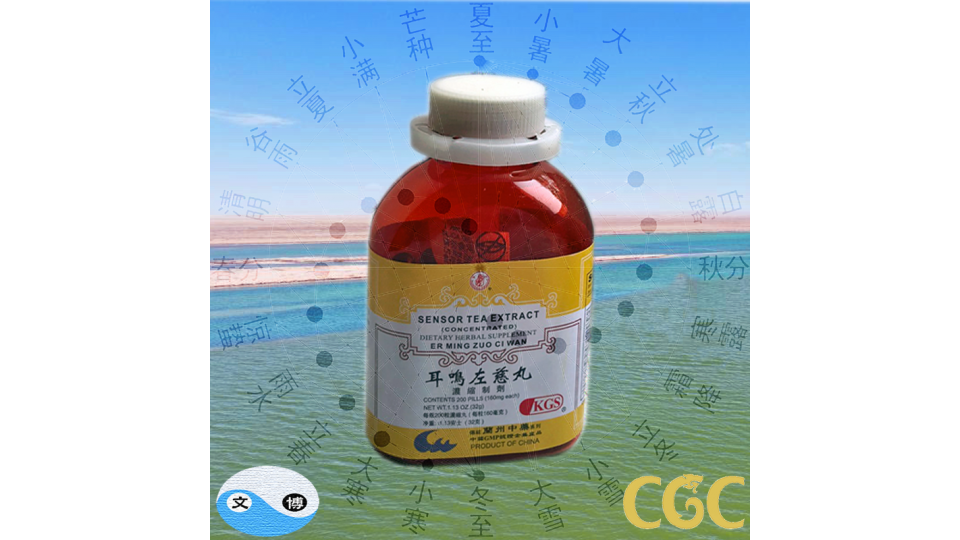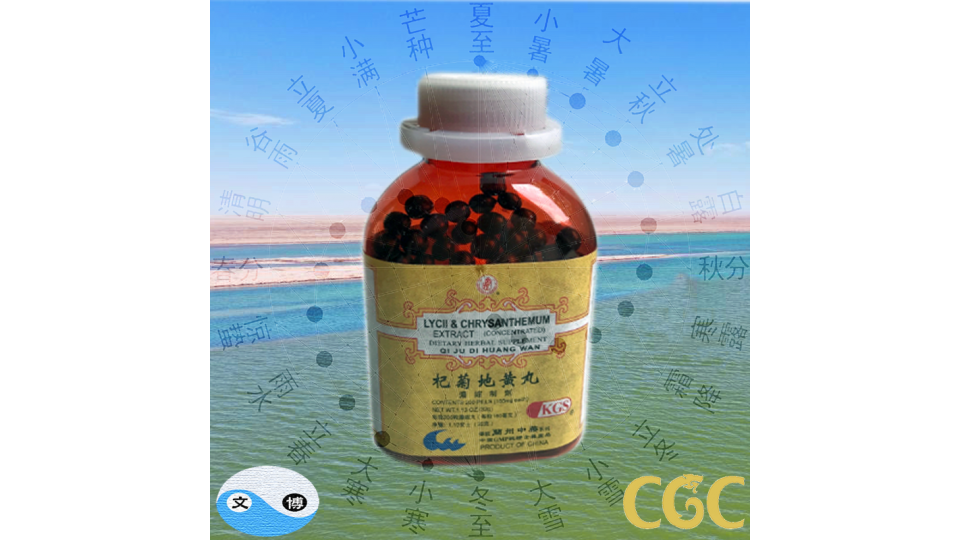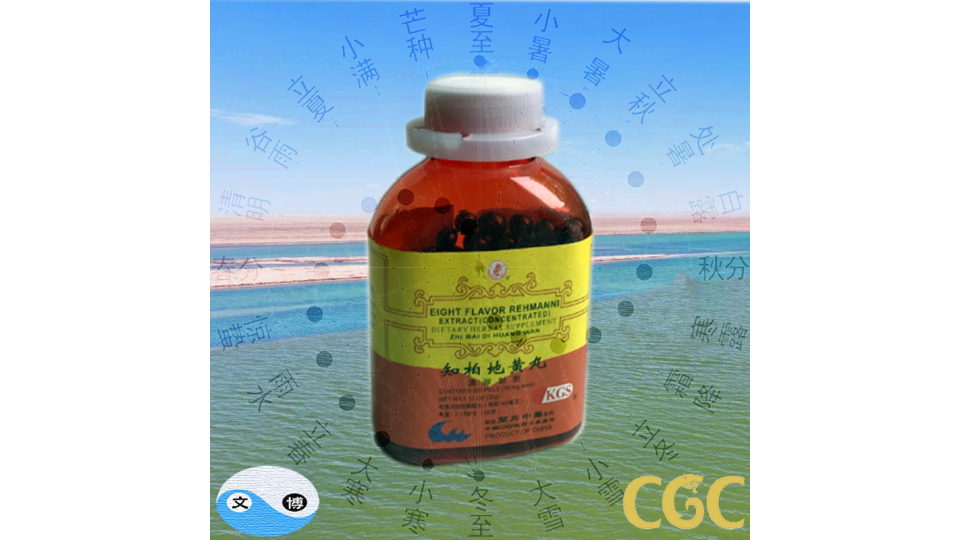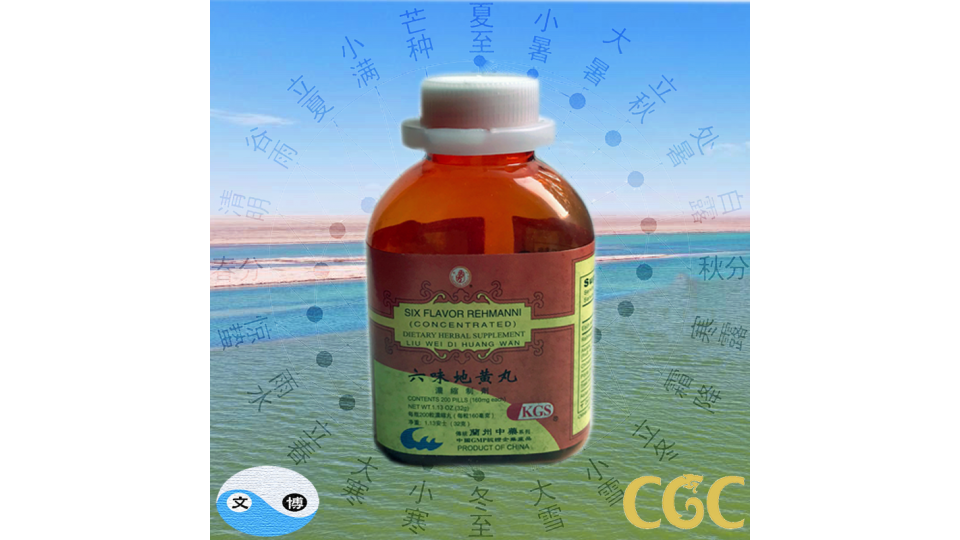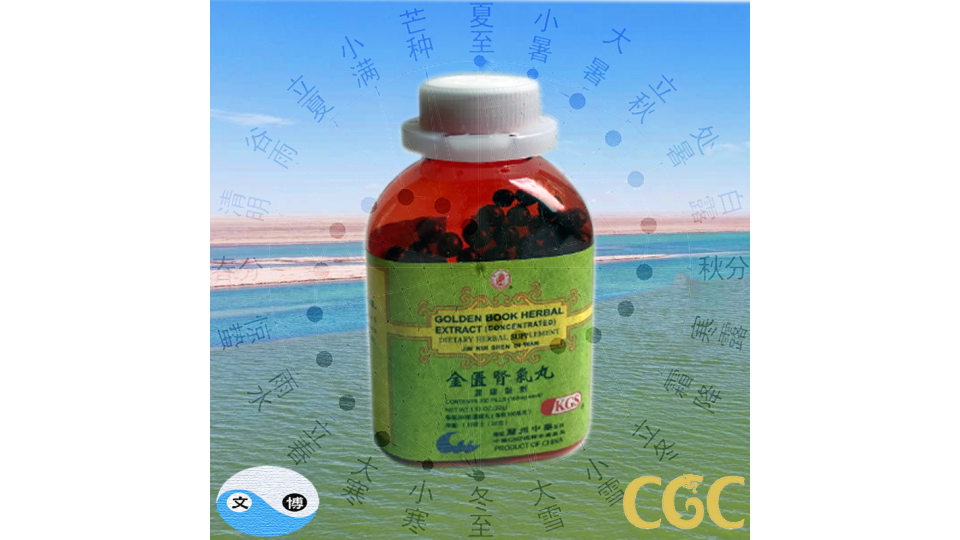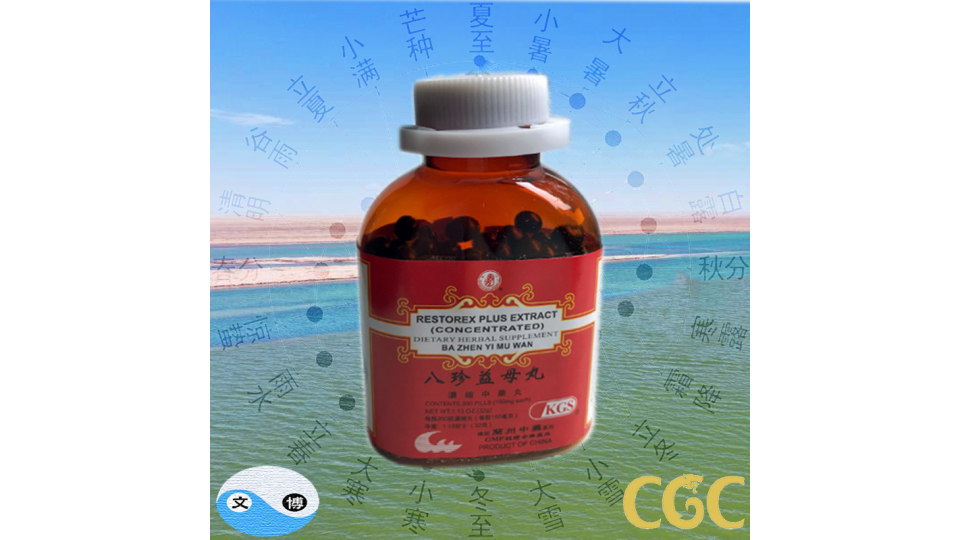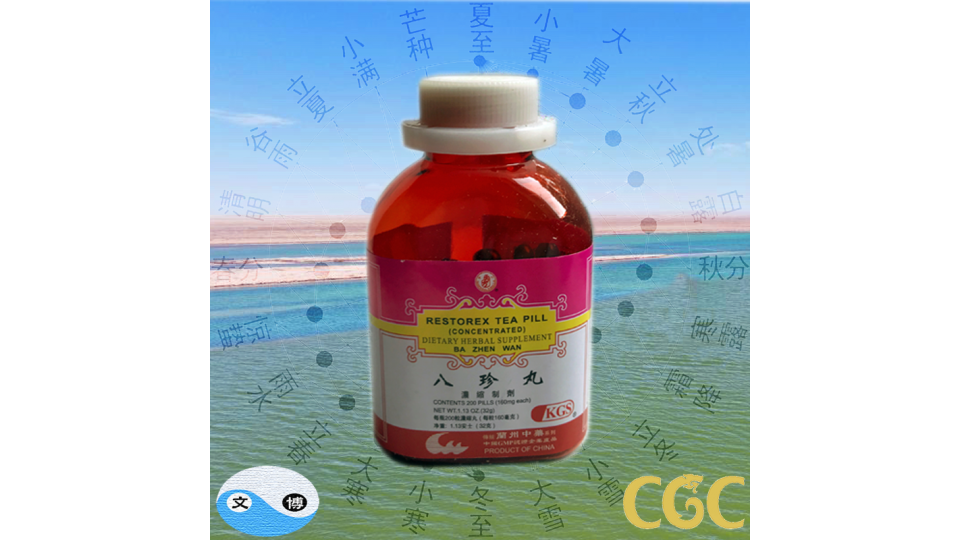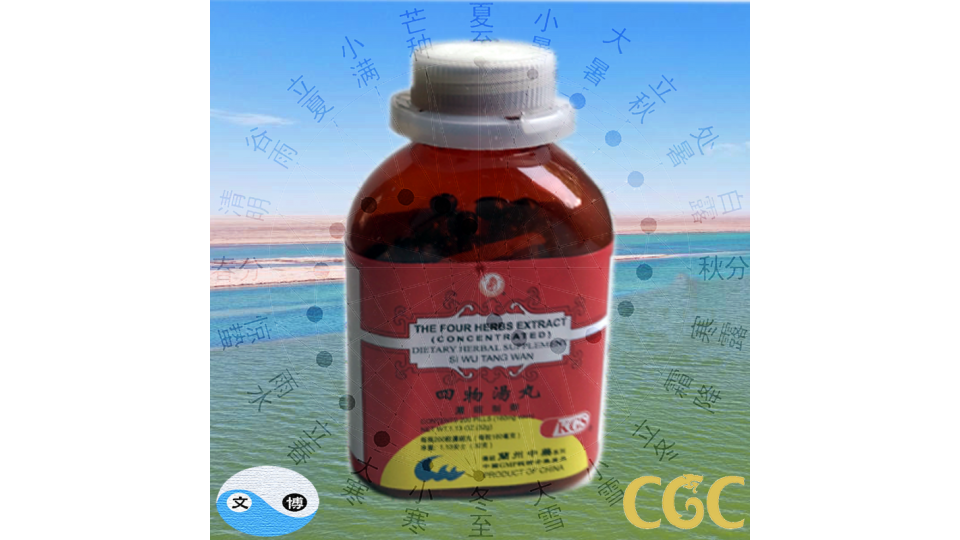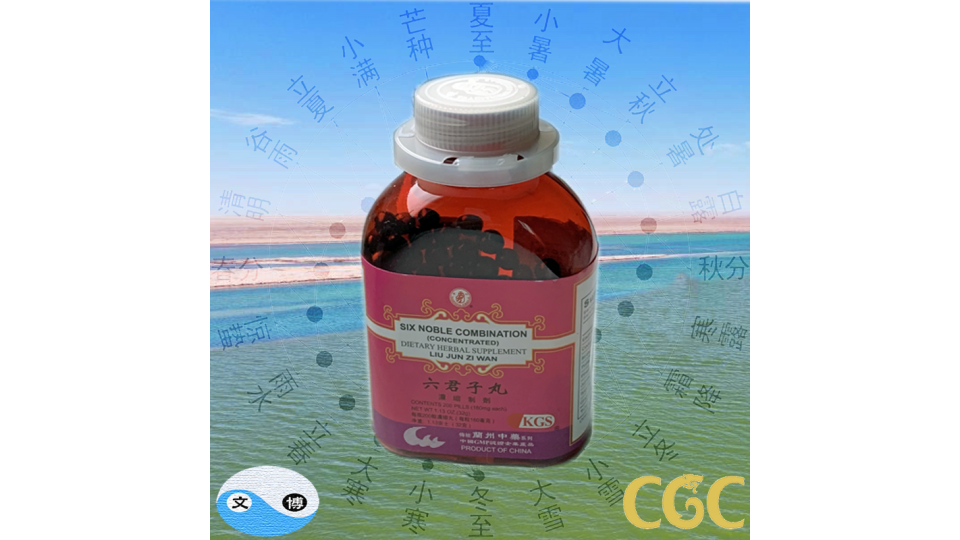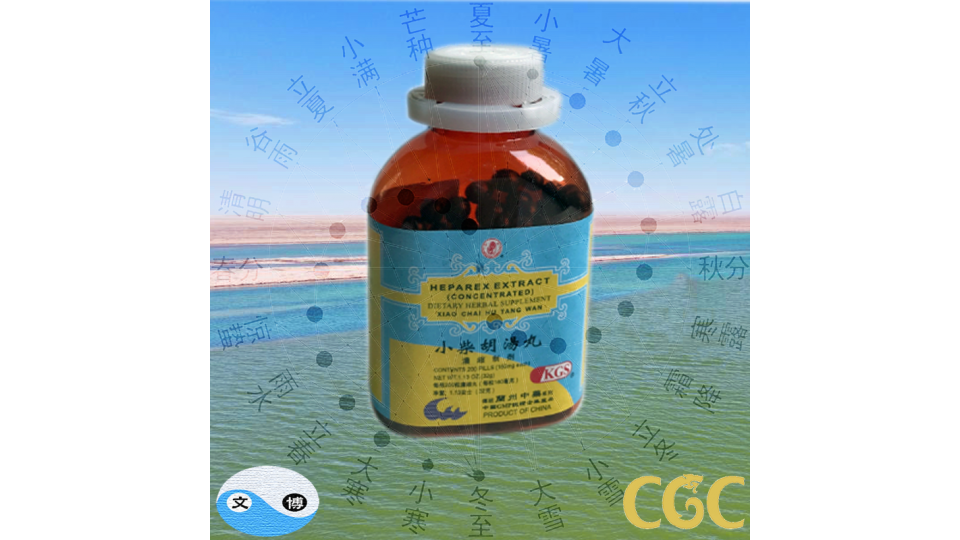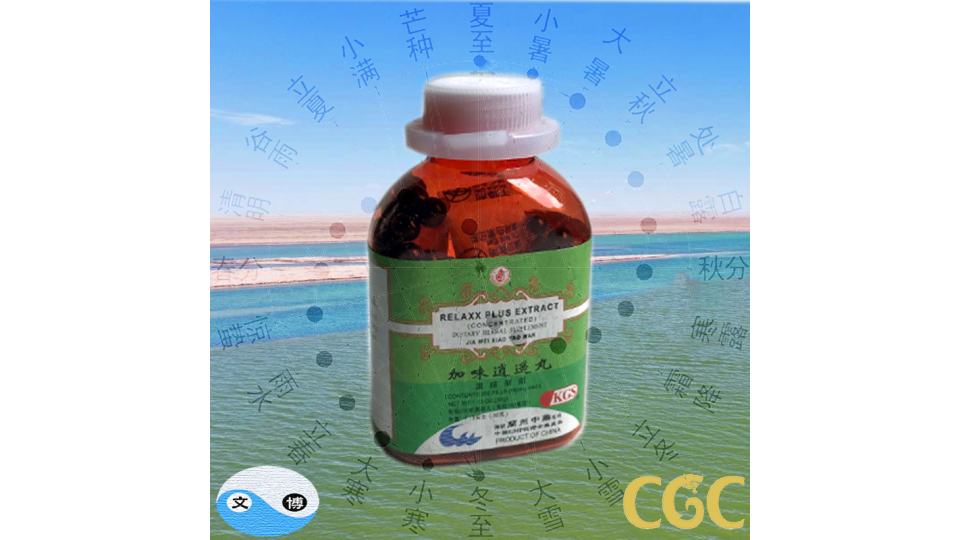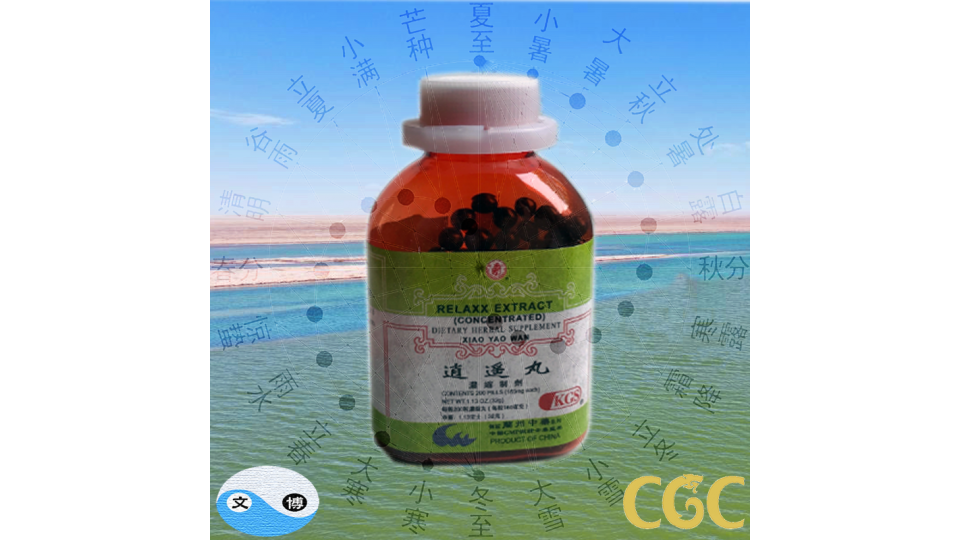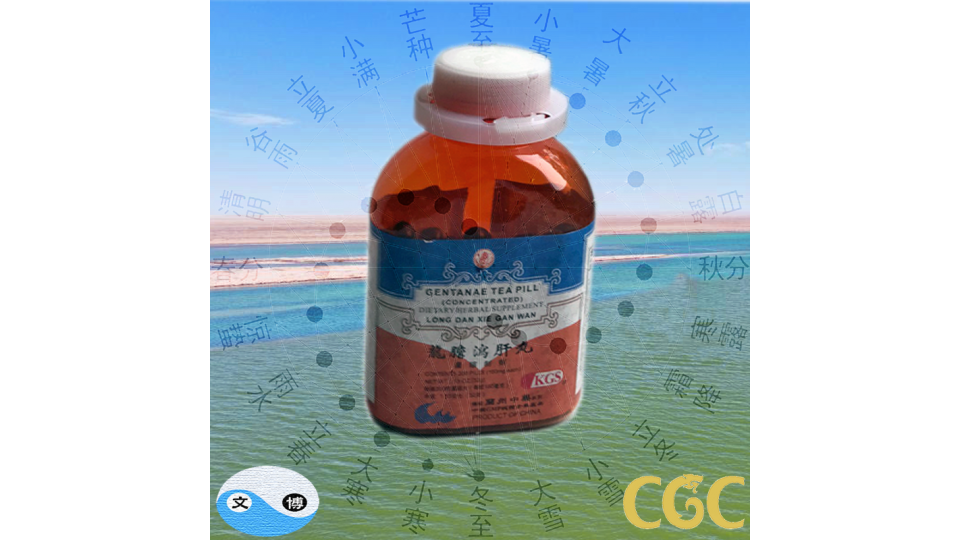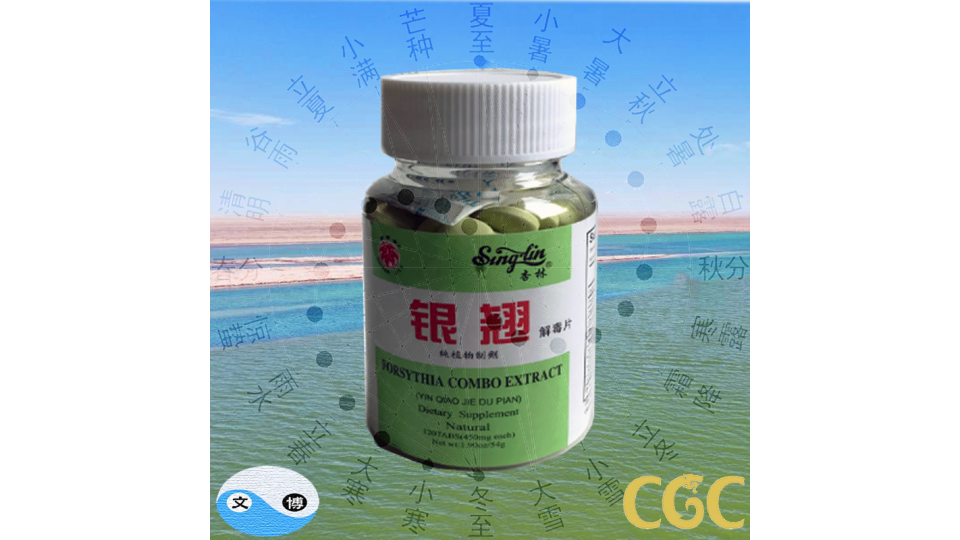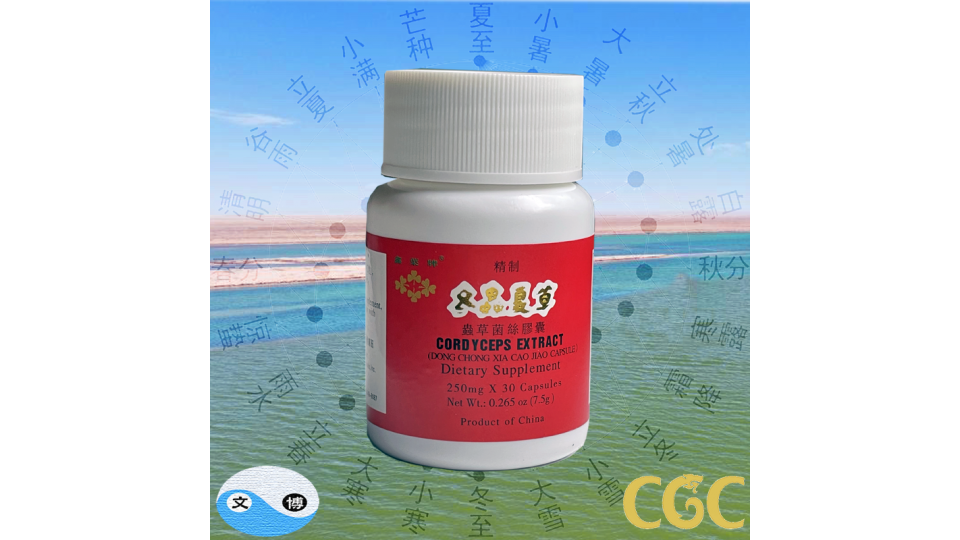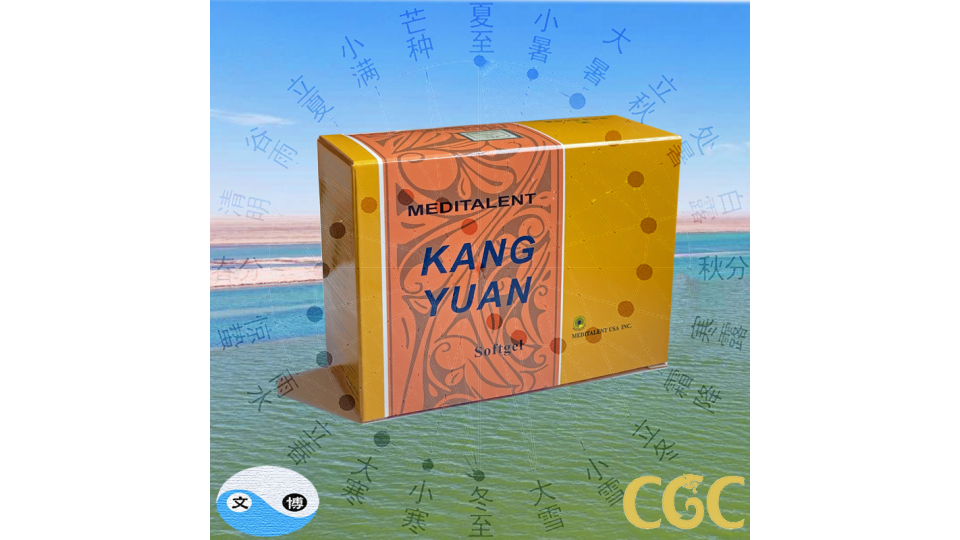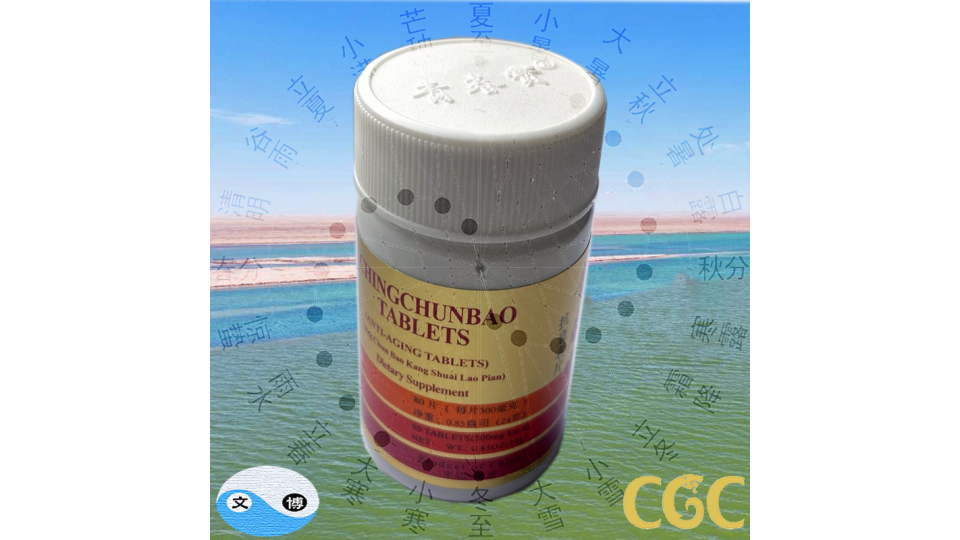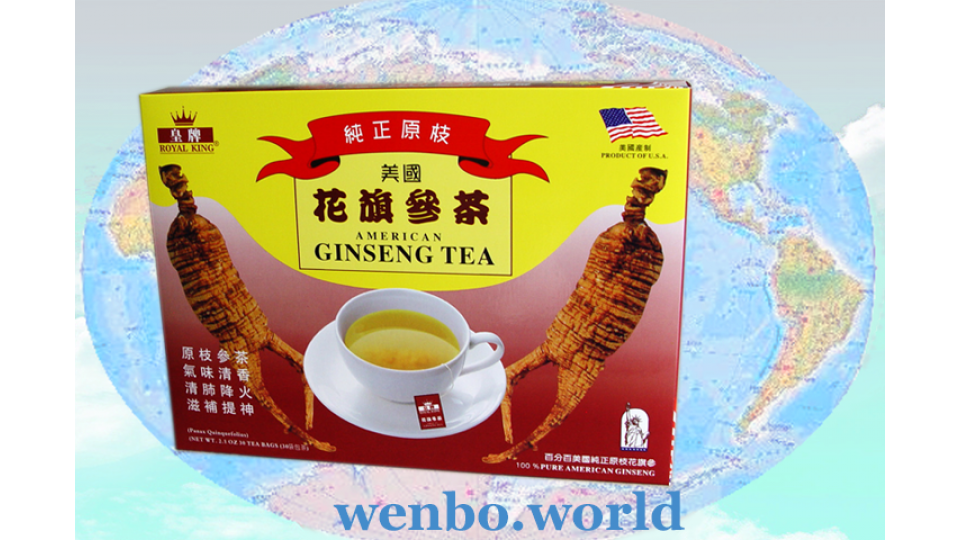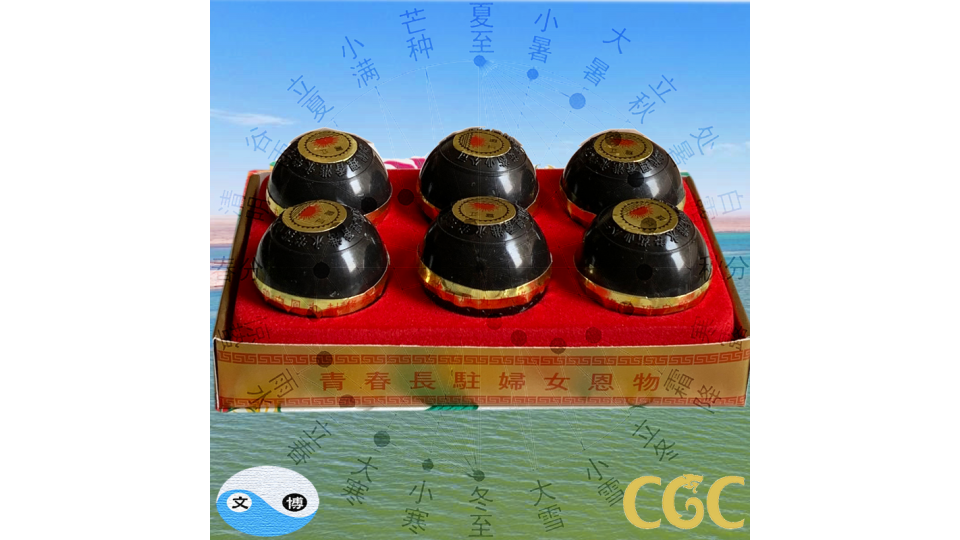From hundreds of typical prescriptions (and Chinese patent medicines) commonly used in TCM, I picked 10 formulas in my top list according to their popularity, availability, and great broader scope of application to diseases pertain to organ channels such as the lung, heart, spleen and stomach, liver and gallbladder, kidney, urinary and genital system, underlying imbalance or disorders of qi, blood and body fluid. Each one is given in detail the recipe source, main ingredients, actions, indications. Directions, administrations and precautions are left out because their clinical applications should be directed by doctors and TCM practitioners. Their modern-day disease indications can be found from traditional Chinese medicine textbooks and professional journals. As there are a variety of forms available over the counter, in practitioners' offices and in health food stores, interested users should consult with practitioners, check product label, and read online product description. Some ingredients of an over-the-counter product maybe are slightly different from its original classical recipe. This is a normal phenomenon because manufacturers make a product mainly based on the specification in the Pharmacopoeia of the People's Republic of China.
十大常用名方治病养生保健康 - 银翘散, 龙胆泻肝汤, 逍遥散, 小柴胡汤, 补中益气汤, 八珍汤, 金匮肾气丸, 参苓白术散, 血府逐瘀汤, 独活寄生汤
1. Yin Qiao San (Yin Qiao Jie Du Pian)
Yin Qiao San (Powder of Lonicera and Forsythis, Honeysuckle and Forsythia Powder)
Related product: Yin Qiao Jie Du Pian (Wan), Detoxicant Tablet (Pill) of Lonicera and Forsythia), Yinchiao Tablet
This recipe is originally appeared in Wen Bing Tiao Bian (Detailed Analysis of Seasonal Febrile Diseases, 1798 A.D.) by Wu Tang (1758-1836), primarily used to clear heat toxins and release the exterior of the body for the treatment of wind-heat affliction with chills and fever, headache, and sore throat. It goes down as the typical formula of pungent-cool releasing the exterior. Yin Qiao Jie Du Pian is the patent remedy based on Yin Qiao San, devised about 150 years ago, that is regarded as highly effective for treating common cold, influenza, certain acute disorders, mainly onset of infection and inflammation, marked by sore throat, congestion, feverish feeling, and aching in the muscles. This remedy is famous in China, perhaps the number one standing and in common use herbal remedies of Chinese families.
The recipe is mainly composed of Forsythia (Lianqiao), Lonicera flower (Jinyinhua), Platycodon (Jiegeng), Mentha (Bohe), Prepared soybean (Dandouchi), Bamboo leaf (Zhuye), Licorice (Gancao), Schizonepeta spike (Jingjiesui), Arctium fruit (Niubangzi).
Actions: Dispelling wind and removing heat, clearing away heat and toxic material, promoting sweating and relieving exogenous pathogenic factors.
Indications: This recipe is indicated for seasonal febrile diseases in the early stage and severe syndrome of exterior heat; the onset of epidemic febrile disease. The usual symptoms are fever without perspiration, or hindered perspiration, and slight aversion to cold, headache, thirst, cough, sore throat, red tip of tongue, thin and yellow coating of the tongue, superficial and rapid pulse.
| Manifestations | Explanations | |
| Fever without sweating or with little sweating. Slight aversion to wind and cold Headache Cough |
Pathogenic wind and warmth acting to attack the exterior and invade the lungs, leading to the defensive qi being depressed and the lung qi failing its function in dispersing and descending. | |
| Thirst Sore throat |
Upward steaming of warmth and heat. | |
| Red tongue tip and thin, whitish or yellowish coating Superficial and rapid pulse |
Exterior heat symptoms. |
Application: It is applicable to flu, acute tonsillitis, scarlet fever, measles of early stage, epidemic encephalitis B, epidemic cerebrospinal meningitis, and parotitis, etc., which belong to the exterior syndrome of wind-heat and are marked by fever, sore throat, and no perspiration.
Applicable to the syndrome of pathogenic wind-heat invasion of eyelid, manifested as hordeolum, trachoma, local slight redness, swelling and itching of the eyelid with a palpable induration at the initial stage; acute dacryocystitis belongs to the syndrome of ocular invasion of pathogenic wind and heat; acute catarrhal conjunctivitis belongs to the syndrome of heat exceeding wind; epidemic keratoconjunctivitis belongs to the syndrome of initial affection of epidemic and noxious pathogenic factors; bacterial corneal ulcer belongs to the syndrome of excessive accumulation of wind and heat; herpes simplex keratitis belongs to the syndrome of wind-heat invasion of eye; inflammation of the external auditory canal belongs to the syndrome of wind and heat attacking the exterior; acute epiglottiditis belongs to syndrome of external attack by wind and heat, pharyngodynia and dysphagia with the sensation of pharyngolaryngeal obstruction.
2. Long Dan Xie Gan Tang (Long Dan Xie Gan Wan)
Long Dan Xie Gan Tang (Decoction of Gentian for Purging Liver Fire, Gentian Liver-purging Decoction)
Related product: Long Dan Xie Gan Wan, Gentanae Tea Pill
This recipe is originally appeared in Yi Fang Ji Jie (Collection of Prescriptions with Exposition), "Long Dan Xie Gan Tang" (Decoction of Gentian for Purging Liver-Fire), that is regarded as the typical formula for clearing zang-fu organ heat. Since it works both on purging excessive fire from the liver and gallbladder and draining damp and clearing heat from the urinary bladder and large intestine, it can be used to treat 25 kinds of diseases in relation to the liver and gallbladder channels and region. In modern clinic, it is applicable to Migraine Headaches; Intercostal Neuralgia; Gallstones; Acute Conjunctivitis; Acute Otitis Media; Boils and Carbuncles of the Vestibular and External Auditory Canal; Hypertension; Acute Icteric Hepatitis; Acute Cholecystitis; Herpes Zoster; Herpes Simplex; Acute Pyelitis; Acute Cystitis; Urethritis; Acute Pelvic Inflammation; Acute Prostatitis; Scrotal Eczema; Swollen Testes; Hyperthyroidism.
The recipe is composed of Gentian root, Scutellaria root, Capejasmine fruit, Oriental water plantain, Plantain seeds, Five-leaf akebia stem*, Chinese angelica root, Dried rehmannia root, Bupleurum root, Licorice root.
Actions: Purging excessive fire from the liver and gallbladder and removing damp-heat from the lower energizer.
Indication: Fire of excess type or dampness-heat in the liver and gallbladder manifested as dizziness, red eye, tinnitus, hypochondriac pain, bitter taste, dark urine, difficulty and pain in micturition, leukorrhagia due to downward flow of damp-heat from liver channel, as well as acute conjunctivitis, acute otitis media, herpes zoster, acute infection in urinary tract, acute pelvic inflammation and swollen genital organs.
| Manifestations | Explanations | |
| Bitter taste in the mouth Red, swelling pain the eye. Swollen ear. Tinnitus Deafness Headache Hypochondriac pain |
Excessive fire in the liver and gall bladder attacking the head, eyes and ears along the corresponding meridians or stagnation of qi in the liver and gall bladder impairing the meridians. | |
| Swelling or itching in the genital organs Yellow leukorrhea Turbid urine Painful urination |
Damp-heat in the liver and gall bladder flowing along their meridians down to the genital organs. | |
| Red tongue with thick yellowish fur Taut and rapid pulse |
Sings of accumulation of damp-heat. |
Application: It is applicable to the syndrome of flaming-up of liver fire, damp and heat in the liver and gallbladder, such diseases as intractable migraine, hypertension, acute conjunctivitis, furuncle of external auditory canal, acute pyelonephritis, acute icterohepatitis, acute cholecystitis, urethritis, vulvitis, bubo, and acute pelvic inflammation.
Applicable to impotence, seminal emission, due to downward movement of damp heat marked by inability to have penis erection, damp and smelly scrotum; nipple rupture with the syndrome of damp-heat in liver meridian; herpes simplex with dampness and heat accumulation syndrome; herpes zoster; wart, papule in the genital and perianal region; acute eczema with the syndrome of infiltration of dampness and heat; cervicitis with thesyndrome of damp-heat accumulation; insomnia due to liver qi stagnation turning into fire; hematemesis and epistaxis due to hyperactivity of liver fire; prostatitis with the syndrome of heat-toxin accumulation, which is often seen in acute prostatitis complicated with abscess; seminal vesiculitis with the syndrome of excessive flame of liver fire; Bartholinitis and Bartholin's cyst at the acute stage; protrusion of uterus out of the vaginal orifice with ulceration on the surface; syphilis, single hard papule in the external genitalia and amus or breast; acute gonorrhea, pus discharge in the meatus urinarius, edema of urethral macosa in severe cases; gonorrhea with complications; intrahepatic cholestasis in pregnancy; epidemic keratoconjunctivitis; Bacterial corneal ulcer; herpes simplex keratitis; iridocyclitis (anterior uveitis); acute angle-closure glaucoma; optic neuritis; inflammation of the external auditory canal; eczema of external ear; acute suppurative otitis media; sudden deafness; acute nasosinusitis; nasal hemorrhage; gouty arthritis.
Use longdan xiegan tang and ditan tang to treat epilepsy, which is diagnosed as excessive internal phlegm fire type.
* This ingredient belongs to Caulis Akebiae, Not Aristolochia manshuriensis Kom.
3. Xiao Yao San (Xiao Yao Wan)
Xiao Yao San (Ease Powder)
Related product: Xiao Yao Wan (Ease Pill), Relaxx Extract
This recipe is a renown herbal formula that harmonizes liver with stomach-spleen, commonly used for anxiety, stress, depression, premenstrual and menopausal syndrome. It originally appeared in Tai Ping Hui Min He Ji Ju Fang (Benevolent Prescriptions from Taiping Pharmaceutical Bureau). It is highly praised by physicians of all through ages. In clinic, it is applicable to Chronic Hepatitis; Pleurisy; Chronic Gastritis; Peptic Ulcer; Irregular Menstruation; Uterine Bleeding; Leukorrhea; Anemia; Pelvic Inflammatory Disease; Breast Fibroids; Optic Nerve Atrophy; Central Retinitis.
The recipe is composed of Bupleurum root, Chinese angelica root, White peony root, Bighead atractylodes rhizome, Poria, Roasted Licorice root, Fresh ginger, Peppermint.
Actions: Soothing the liver to disperse the depressed qi and invigorating the spleen to nourish the blood.
Indications: Use for Liver Qi Stagnation with Blood Deficiency manifested as diverse symptoms including digestive dysfunction (abdominal bloating and fullness, hiccups, poor appetite), menstrual and pre-menstrual disorders (cramps, irregular periods, infertility, breast distension, depression, irritability), as well as vertigo, headache, fatigue, blurred vision or red, painful eyes. Also useful in food allergies, chronic hay fever, and hypoglycemia.
| Manifestations | Explanations | |
| Hypochondriac pain Distension in the breast Alternate attack of chills and fever |
Stagnation of Qi in the liver and retardation of circulation of Qi in the channels. | |
| Headache Dizziness Dry mouth and throat |
Deficiency of blood and excessive heat in the liver | |
| Mental fatigue Poor appetite |
Deficiency of the spleen | |
| Reddish tongue Taut and thready pulse |
Blood deficiency and Qi stagnation | |
| Irregular menstruation | Functional impairment of the liver and spleen in storing and controlling the blood. |
Application: It is applicable to chronic hepatitis, cholelithiasis, gastroduodenal ulcer, chronic gastritis, gastrointestinal neurosis, premenstrual tension, hyperplasia of lobule of mammary gland, menopausal syndrome, and chronic pelvic inflammation, whose symptoms are stagnation of liver qi with deficiency of blood as well as failure of the spleen in transportation and transformation with chief manifestations as hypochondriac distention and pain, mental fatigue and poor appetite.
Applicable to gastric carcinoma due to incoordination between the liver and stomach; impotence due to stagnation of liver qi, inability to have penis erection, depression or irritability; SLE due to qi stagnation and blood stasis, symmetrical butterfly facial erythema; depressive syndrome caused by stagnation of liver qi; male breast, distending pain in the bilateral or unilateral breast, palpable flat and round mass under the areola, painful and movable by touch; perimenopausal syndrome manifested as liver depression, mental depression, anxiety, sentimentality, irritability, chest oppression, susceptibility to sighing, distending pain in hypochondria, feverish sweating, disturbance of menstruation, profuse menorrhea in the late stage with dark red color, red tongue with thin and white or thin and yellow fur as well as taut pulse before and after menopause; hypogalactia due to liver depression and qi stagnation; optic atrophy; pharyngeal paraesthesia (pharyngeal foreign object sensation like an object obstructing the throat); Hysterial aphonia.
Use xiao yao san and er chen tang soothe the liver, regulate qi dissipate phlegm and disperse accumulation, treat scrofula seen in the initial stage; use xiao yao san and xue fu zhu yu tang to treat endometriosis due to qi stagnation and blood stasis.
Modifications of Xiao Yao San: Jiao Wei Xiao Yao San (Wan), Dan Zhi Xiao Yao San (Wan)
Adding gardenia fruit (zhi zi) and peony bark (mu dan pi) to purge heat from the liver, which is known as 加味逍遥丸 (jia wei xiao yao wan) or 丹栀逍遥丸 (dan zhi xiao yao wan). It is indicated for the case of heat converted from stagnated liver-qi manifesting dry and bitter mouth, general scratch itching, fever with night sweat, poor appetite, drowsiness, difficulty in micturition, or irregular menstruation. It is applicable to cholecystitis with gallstone; nipple rupture due to depressive syndrome, stagnant qi transforming into fire; neurodermatitis, psoorasis, intractable tinea; early menstruation; amenorrhea, or scanty menorrhea, or irregular menstruation, failure to be pregnant long after marriage; perimenopausal syndrome, stagnant heat in the liver meridian; vertigo during pregnancy due to yin asthenia and liver hyperactivity; acute angle-closure glaucoma, syndrome of stagnation of liver qi; primary open-angle glaucoma (chronic simple glaucoma); Central serous choriortinopathy, syndrome of qi stagnation and blood stasis; optic atrophy, syndrome of stagnancy of liver qi; fracture of rib in the late stage.
4. Xiao Chai Hu Tang (Xiao Chai Hu Wan)
Xiao Chai Hu Tang (Minor Decoction of Bupleurum)
Related product: Xiao Chai Hu Wan, Minor Pill of Bupleurum, Heparex Extract, xiao chaihu chongji (Bupleurum Granule for Shaoyang Syndrome)
Minor Decoction of Bupleurum is a classical prescription in TCM that originates in the Han Dynasty Doctor Zhang Zhongjing's masterpiece Shang Han Lun (Treatise on Febrile Disease). It is primarily used to harmonize shaoyang in the treatment of shaoyang syndrome in cases of cold-induced disease and heat in a woman's blood chamber, having gone down as prototypical formula for mediation all throughout the ages. Modern research has proved that the recipe has some effects of inhibiting bacteria, viruses and leptospira, relieving the reaction of the human body to the invaded pathogen, and remarkably allaying fever and resisting inflammation. In addition, the recipe also has the effects of promoting digestion, preventing vomiting, expelling phlegm, relieving cough, protecting the liver, normalizing the functioning of the gallbladder and tranquilizing the mind. The recipe can be modified as herbal supplement for the common cold, malaria, infection of biliary tract, hepatitis, pleuritis, chronic gastritis, indigestion, mastosis, intercostal neuralgia, neurosis and AIDS marked by the symptoms of shaoyang disease.
The recipe is composed of Bupleurum (Chaihu), Scutellaria (Huangqin), Ginseng (Renshen), Pinellia tuber (Banxia), Licorice (Gancao), Fresh ginger (Shengjiang), Jujube (Dazao).
Actions: Mediate the Shaoyang channels and reducing the accumulated heat in the interior.
Indication: Shaoyang syndrome, alternate attacks of chills and fever, feeling of fullness and discomfort in the chest and hypochondrium, anorexia, dysphoria, retching, bitterness in mouth, dry throat, dizziness, stringy pulse, malaria, jaundice, etc.
| Manifestations | Explanations | |
| Alternate attacks of chills and fever | Pathogenic factor attacking Shaoyang so the struggle between the pathogenic factor and anti-pathogenic factor is carried on and gives rise to the symptom. | |
| Stifling sensation and fullness in the chest and hypochondriac region | Qi stagnation in the Shaoyang channels. | |
| Loss of appetite Irritability Vomiting |
Pathological change of the Shaoyang (gall bladder) affecting the stomach, leading to upward perversion of the stomach Qi | |
| Bitter taste in the mouth Dry throat Dizziness |
Flaring up of fire in the Shaoyang channels. | |
| Thin and whitish tongue fur Taut pulse |
Pathological change of Shaoyang located between the semi-exterior and semi-interior of the body. |
Application: It is applicable to common cold, influenza, chronic hepatitis, acute or chronic cholecystitis, pleuritis, pyelonephritis, postpartum infection, gastric ulcer and other disease, which manifest the above symptoms and pertain to febrile disease in shaoyang meridian.
5. Bu Zhong Yi Qi Tang (Bu Zhong Yi Qi Wan)
Bu Zhong Yi Qi Tang (Decoction for Reinforcing Qi in the Middle Energizer)
Related product: Bu Zhong Yi Qin Wan, Pill for Reinforcing Qi in the Middle Energizer, Invigorator Tea Pill
The original prescription, Decoction for Reinforcing Middle-energizer and Replenishing Qi, comes from Pi Wei Lun (Treatise on the Spleen and Stomach). It is used in TCM for invigorating the spleen, replenishing qi and elevating the spleen-yang to treat qi collapse. In modern clinic, it is widely applicable to Gastroptosis; Rectum and Uterus Prolapse; Uterine Bleeding; Myasthenia Gravis; Recurrent Miscarriage; Chronic Bronchitis; Leukorrhea; Chronic Hepatitis; Corneal Ulcers; Cerebral Arteriosclerosis; Pernicious Anemia; Leukopenia; Chronic Nephritis.
The recipe is composed of Astragalus root, Prepared licorice root, Ginseng, Chinese angelica root, Tangerine peel, Cimicifuga rhizome, Buplerum root, Bighead atracylodes rhizome.
Actions: Invigorating the spleen and replenishing qi and elevating the spleen yang to treat qi collapse.
Indication: The syndrome of deficiency of the spleen and stomach, prolapse due to deficient qi, marked by poor appetite, lassitude, short breath and disinclination to talk, loose stool, fever with perspiration, thirst with preference for hot drinks, or prolapse of the rectum, prolapse of the uterus, protracted diarrhea, protracted dysentery, metrorrhagia and metrostaxis, pale and large tongue with thin whitish fur.
| Deficiency of Qi in the Spleen and Stomach | ||
| Pale complexion Disinclination to talk |
Qi deficiency. | |
| Fatigue | Weakness of the spleen which cannot control muscles. | |
| Poor appetite Loose stool |
Impairment of transformation and transportation of the spleen leading to existence of dampness. | |
| Fever | Yang qi sinking into the yin portion due to deficiency of the spleen. | |
| Spontaneous sweating | Weakness of the spleen causing qi deficiency and disturbing the pore's ability to open and close. | |
| Sinking of Yang Qi | ||
| Prolapse of rectum Prolapse of uterus Gastroptosis Prolonged diarrhea Chronic dyscentery |
Qi deficiency of the spleen and stomach making qi sink and fail in uplifting. | |
| Pale swollen tongue with thin whitish coating empty, weak and flooding pulse |
Signs of qi deficiency. | |
Application: It is applicable to visceral ptosis, chronic gastroenteritis, chronic dysentery, myasthenia gravis, chronic hepatitis, long-term low fever from unknown reasons, hypermenorrhea, and chyluria, which pertain to qi collapse due to deficiency of the middle-energizer.
Applicable to chronic gastritis pertain to qi deficiency in the spleen and stomach; urinary infection in the case with distending and bearing-down sensation in the lower abdomen and dripping urine due to deficiency of spleen qi; fever due to deficiency of qi, low fever or high fever which is induced or aggravated by overwork; leukopenia caused by deficiency of the spleen and stomach and insufficiency of middle energizer qi; pigmentary degeneration of retina, syndrome of asthenia of spleen qi; chronic laryngitis, syndrome of qi deficiency of the lung and spleen; hemorrhoid, syndrome of insufficiency of gastrosplenic qi, dropping sensation in the anus, easy prolapse of hemorrhoid, pushed back by hand each time, hematochezia in slightly red color; early menstruation with prolonged duration and profuse, light-colored and thin menses, due to qi asthenia; downward migration of uterus, or protrusion of uterus from the vaginal orifice, aggravation after overstrain, prolapsing sensation in the lower abdomen; senile cataract, syndrome of spleen asthenia and qi deficiency, opacity of lens, dim vision, mental tiredness, sallow complexion and hypodynamic limbs; senile macular degeneration, syndrome of asthenia of spleen qi; abnormal patency of eustachian tube, syndrome of qi deficiency of the spleen; atrophic rhinitis, syndrome of deficiency of qi and blood, severer atrophy of nasal sarcolemma, nasal discharge with foul odor or yellowish-greenish pus crusts.
Use buzhong yiqi tang and baitouweng tang replenish qi, invigorate the spleen, clean the intestines and dissipate dampness, treat AIDS, middle energizer deficiency with heat retention in the stomach and intestines, which are manifested as lingering fever, emaciation, short breath, lassitude of limbs, abdominal pain, diarrhea, yellow and thin stools sometimes with pus and blood, tensemus, nausea, vomiting, white and greasy tongue coating, and soft-superficial, thready pulse.
Use buzhong yiqi tang and xuefu zhuyu tang supplement qi and strengthen the spleen, resolve stasis and dissipate mass, treat the syndrome of qi asthenia and blood stasis, hysteromyoma, manifested as mass in uterus, early profuse menstruation with light color, thin texture and large blood clot, prolapsing pain in the lower abdomen, profuse leukorrhea with white color and thin texture, weakness of limbs, lack of strength, no desire to speak, light-colored tongue with thin and white fur, weak, thin and unsmooth pulse.
6. Ba Zhen Tang (Ba Zhen Wan)
Ba Zhen Tang (Decoction of Eight Precious Ingredients)
Related product: Ba Zhen Wan, Pill of Eight Precious Ingredients, Restorex Tea Pill
This recipe is originally appeared in Classification and Treatment of Traumatic Diseases (Zheng Ti Lei Yao). Compounding 四君子汤 (si jun zi tang,) and 四物汤 (si wu tang,), it is primarily used for both qi and blood and blood deficiency usually due to loss of blood or long-standing disease. This formula tremendously helps fracture and traumatic injury in the late stage, and women's irregular menstruation and recovery from delivery and illness.
The recipe is mainly composed of Chinese angelica root, Chuanxiong rhizome, White peony root, Prepared rehmannia root, Ginseng, Bighead atractylodes rhizome, Poria, Prepared licorice root.
Actions: Invigorating qi and nourishing blood.
Indication: Useful for deficiency syndrome both of qi and blood, pale complexion, dizziness, dim eyesight, lassitude of limbs, shortness of breath, disinclination to talk, palpitation, insomnia, pale tongue with thin and whitish coating, thready and feeble pulse.
| Manifestations | Explanation | |
| Sallow or pale complexion Dizziness Blurred vision. Anxiety |
Blood deficiency which fails in nourishing the head, eyes, and face as well as the heart. | |
| Shortness of breath Disinclination to speak. Poor appetite Lassitude |
Signs of qi deficiency of the spleen and lungs. | |
| Pale tongue with thin whitish coating Thready and feeble pulse |
Sign of qi and blood deficiency. |
Applications: It is applicable to the deficiency syndrome of qi and blood as seen after serious diseases or in various chronic diseases or menstrual disorder with chief manifestations as shortness of breath, weakness, dizziness, pale tongue and thready pulse.
Applicable to headache due to deficiency of qi and blood, manifested as headache, dizziness and palpitation which are aggravated by overstrain; anemia; phlegmon, i.e., decayed flesh has dropped after ulceration, but tumefaction has not be eliminated yet; or the wound is in slightly red color, with unfresh granulation and thin discharged pus; vitiligo, white macules; amenorrhea, syndrome of asthenia of qi and blood, gradual development of menorrhea from delayed menorrhea, scanty menorrhea and light-colored menorrhea.
Applicable to primary sterility, female sterility, qi and blood asthenia, no pregnancy long after marriage, scanty menorrhea with light color, or amenorrhea, sallow complexion, lusterless skin, physical weakness, spiritual lassitude, dizziness, shortness of breath and palpitation, accompanied by maldevelopment of the uterus, light-colored tongue with white fur, thin and weak pulse; birth injury syndrome, history of dystocia or birth injury, hysteroptosis, prolapsing sensation in the lower abdomen, lack of strength and no desire to speak, aching and weak sensation in the loins and knees, frequent urination, vertigo, palpitation, light-colored tongue and thin pulse.
Applicable to the syndrome of deficiency of qi and blood causing dysfunctional drainage of tears, Epiphora (lacrimation disorder, lacrimation troubles); chronic pharyngitis, syndrome of qi deficiency of the lung and spleen, dryness and pain of the pharyngology or with foreign body sensation which are prolonged without cure and will worsen after physical tiredness, scanty pharyngeal sputum, swelling go the pharyngeal mucosa with pale color as well as hyperplasia of lymph follicles of the posterior pharyngeal wall discovered during examination.
Applicable to fracture of humeral shaft in the late stage; fracture of rib in the late stage; scapulohumeral periarthritis; cervical spondylopathy; traumatic arthritis.
Use bazhen tang and danggui buxue tang nourish qi and blood, treat colon cancer with deficiency of qi and blood, which is manifested as pale complexion, pale lips and nails, shortness of breath and lassitude, dislike of speaking, prolapse of the anus, pale tongue with thin and white coating, weak and thready pulse; dysmenorrhea, syndrome of qi and blood asthenia, dull pain or continuous pain or prolapsing sensation in the lower abdomen during or after menstruation, alleviation with pressure, profuse or scanty menses with light color and thin texture but without clot, pale complexion, dizziness, palpitation, lassitude, light-colored tongue with tooth print and thin fur as well as thin pulse; optic neuritis, syndrome of asthenia of both qi and blood, frequent occurrence in women in breast feeding period.
Modification of Ba Zhen Tang: Ba Zhen Yi Mu Tang, Shi Quan Da Bu Tang
Adding motherwort, the formula is called 八珍益母汤 (ba zhe yi mu tang, Motherwort Decoction with Eight Precious Ingredients), primarily used to treat deficiency both of qi and boold of women, applicable to scanty menstruation; amenorrhea; female sterility, secondary sterility, threatened abortion, qi stagnation and blood stasis; lochiorrhea.
Fore severe cases, add huangqi (astragalus) and rougui (cinnamon bark) to enhance the effect of restoring qi and blood, that is commonly known as 十全大补汤 (shi quan da bu tang, Decoction of Ten Powerful Tonics). It is indicated for cough due to consumption, loss of appetite, emission, debility of feet and knee, nonhealing ulcer, metrorrhagia and metrostaxis of women; the recuperative treatment of postpartum hemorrhage, hypogalactia.
It is applicable to fracture of neck of femur in the late stage; intertrochanteric fracture in the late stage; dislocation of temporomandibular joint in the late stage; traumatic arthritis; degenerative arthritis.
Applicable to gastric carcinoma with deficiency of qi and blood; chronic renal failure marked by sallow complexion, shortness of breath, reluctance to talk, lassitude, weakness, spontaneous perspiration, dizziness, vertigo, pale lips, numbness of hands and feet, palpitation, insomnia, pale, and tender tongue, weak and thready pulse.
Applicable to acute mastitis, qi and blood deficiency syndrome, thin pus after rupture, relieved tumefaction and pain, slightly red granulation in the wound and difficult to be healed, accompanied by lusterless complexion, low spirit and lassitude, pale tongue, thin coating, and thready pulse.
Applicable to syphilis, long duration, pale granulation in the ulcerous surface, with thin purulent fluid and without healing for a long time, withered yellowish complexion, accompanied by dizziness, blurred vision, palpitation, anxiety, short breath, reluctance to speak, pale tongue, thin coating, thready and forceless pulse.
7. Jin Gui Shen Qi Wan
Shen Qi Wan (Jin Gui Shen Qi Wan, Kidney Qi Pill from the Golden Cabinet)
Related product: Gui Fu Di Huang Wan, Ba Wei Shen Qi Wan, Golden Book Herbal Extract
This recipe was originally appeared in Jin Gui Yao Lue (Synopsis of Prescriptions of the Golden Cabinet). It is the fundamental formula for invigorating the kidney. Based on it a number of tonic formulas were devised for supplementing the kidney and liver and reinforcing yang. In modern clinic, it is applicable to Diabetes Mellitus and Insipidus; Hyperaldosteronism; Hypothyroidism; Neurasthenia; Chronic Nephritis; Chronic Bronchitis; Asthma; Pulmonary Emphysema; Urinary Retention; Climacteric Syndromes.
The recipe is composed of dried rehmannia root, Chinese yam, dogwood fruit, oriental water plantain, poria, moutan bark, cinnamon twig, prepared aconite root.
Actions: Warming and invigorating kidney-yang, dispelling cold, draining damp and water accumulation and promoting urination.
Indication: It is indicated for syndrome of deficiency of kidney-yang marked by soreness and weakness of the waist and knees, cold feeling in the lower body, contracture of the lower abdomen, dysuria or polyuria, pale and swollen tongue, feeble pulse with deep and faint chi pulse, as well as phlegm-retention, edema, diabetes, beriberi and dysuria with lower abdominal colic.
| Manifestation | Explanations | |
| Lower back pain Weakness of the leg Cold feeling in the lower body Lower abdominal spasms Impotence Premature ejaculation |
Kidney yang deficiency and declined fire in the gate of life which cannot warm the lower energizer. | |
| Cough and asthma due to excessive phlegm-fluid Palpitation Shortness of breath |
Yang deficiency of the kidney which fails to control body fluid, leading to excessive phlegm-fluid to disturb the lungs and heart. | |
| Edema Dysuria |
Kidney yang deficiency and qi dysfunction of the urinary bladder. | |
| Profuse and clear urine Nocturnal enuresis Incontinence of urine |
Kidney yang deficiency and qi dysfunction of the urinary bladder which cannot control urination. | |
| Thirst Drinking a lot of water |
Damage of yin due to profuse urination | |
| Pale and flabby tongue with whitish coating Deep, thready and forceless pulse |
Signs of yang deficiency. |
Application: It is applicable to chronic nephritis, nephrogenic edema, stranguria, urolithiasis, diabetes, hypothyroidism, neurosism, pigmentary degeneration of retina, hypoadrenocorticism, recurrence of bronchial asthma, allergic rhinitis, menopausal syndrome, etc, which pertain to deficiency of kidney-yang.
Applicable to impotence attributive to deficiency of kidney yang; fever due to deficiency of yang, fever with a desire for being covered up, aversion to clod, clod limbs; edema due to deficiency of kidney yang; prostatic hyperplasia.
Applicable to traumatic arthritis; degenerative arthritis.
Applicable to AIDS, especially deficiency of kidney yang with dizziness, tinnitus, sore and weak knees and loins.
Modification of Shen Qi Wan: Liu Wei Di Huang Wan
The famous Liu Wei Di Huang Wan (Six Ingredient Pill with Rehmannia) is a patent formula based on Jin Gui Shen Qi Wan. The recipe was originally appeared in Xiao Er Yao Zheng Zhi Jue (Craft of Medicinal Treatment for Childhood Disease Patterns). Being a typical recipe for nourishing the kidney and liver yin, in turn, it is the foundation of several commonly known formulas.
Actions: Nourishing yin and invigorating the kidney.
Indication: Use for deficiency syndrome of kidney-yin, marked by soreness and weakness of the waist and knees, vertigo, tinnitus, deafness, night sweat, seminal emission, diabetes, steaming sensation in the bones, hectic fever, feverish sensation in the palms and soles, dry tongue and sore throat, gomphiasis, pain in heels, dribbling urination, persistent opening of fontanel, reddened tongue with little fur, thready and rapid pulse.
| Manifestations | Explanations | |
| Soreness and weakness in the lumbar region and knees Pain in heels |
Yin deficiency in the liver and kidneys which cannot nourish the tendons and bones. | |
| Blurred vision and dizziness. Tinnitus and deafness Dry mouth and thirst Toothache and sore throat |
Yin deficiency in the liver and kidneys which cannot nourish the ears and eyes. Flaring up of fire by yin deficiency of the liver and kidneys. |
|
| Feverish sensation on the palms, soles and in the chest Afternoon fever Night sweating |
Yin deficiency with excessive fire in the interior. | |
| Nocturnal emissions | Fire from yin deficiency disturbing the spermary. | |
| Red tongue with little fur Thready and rapid pulse |
Signs of yin deficiency with heat in the interior |
Application: It is applicable to chronic nephritis, hypertension, diabetes, pulmonary tuberculosis, renal tuberculosis, central retinitis, anovulatory dysfunctional uterine bleeding, menopausal syndrome, retarded growth of children, lumbago, optic neuritis, hyperthyroidism, Addison's disease, neurasthenia, chronic urinary tract infections, deafness, etc., which pertain to the syndromes of kidney-yin deficiency. In case of hyperactivity of fire due to yin deficiency, add Zhimu (Rhizoma Anemarrhenae) and Huangbai (Cortex Phellodendri) to enhance the action of clearing away heat, which become another formula, commonly known as 知柏地黄丸 (zhi bai di huang wan, Amenarrhena-Phellodendron Rehmannia Pill, or Eight Flavor Rehmannia Pill). If concomitant with deficiency of the liver-yin manifesting blurring of vision, add Gouqizi (Fructus Lycii) and Juhua (Flos Chrysanthenmi) to nourish the liver, forming another formula, commonly known as 杞菊地黄丸 (qi ju di huang wan, Pill of Wolfberry, Chrysanthemum and Prepared Rehmannia, or Lycii, Chrysanthemum and Rehmmania Pill). If concomitant with deficiency of the lung-yin manifesting cough and dyspnea, add Maimendong (Radix Ophiopogonis) and Wuweizi (Fructus Schisandrae) to preserve the lung-yin, forming another formula, commonly known as 麦味地黄丸 (mai wei di huang wan, Ophiopogonis, Schisandra, Rehmannia Pill, also known as Eight Immortal Pills for Longevity).
8. Shen Ling Bai Zhu San (Shen Ling Bai Zhu Pian)
Shen Ling Bai Zhu San (Powder of Ginseng, Poria and Bighead Atractylodes)
Related product: Shen Ling Bai Zhu Pian, Codonopsis Root Combination
This recipe is originally appeared in Tai Ping Hui Min He Ji Ju Fang (Benevolent Prescriptions from Taiping Pharmaceutical Bureau), primarily used for the syndrome of qi deficiency in the spleen and stomach, poor appetite with diarrhea, shortness of breath with cough, and limb weakness with fatigue. It has gone down as the typical formula for invigorating the spleen and benefiting the lung. In clinical application of internal medicine and pediatrics, it is commonly used to Childhood diarrhea; infantile malnutrition; poor appetite; recurrent asthma; chronic gastroenteritis; chronic nephritis; chronic diarrhea; chronic colitis; distension of the abdomen; indigestion; loose stools; muscle weakness in arms and legs; functional edema; vomiting; anemia, toxic and other side effect of chemotherapy.
The recipe is mainly composed of lotus seed, job's tear seed, amomum fruit, platycodon root, white hyaciath bean, poria, ginseng, licorice root, bighead atracylodes rhizome, Chinese yam.
Actions: Nourishing qi and strengthening the spleen and eliminating dampness to arrest diarrhea.
Indication: Qi deficiency of the spleen and stomach concomitant with dampness, marked by lassitude of the extremities, general debility, poor appetite, dyspepsia, vomiting or diarrhea, chest distress and epigastric fullness, sallow complexion, pale tongue with whitish and greasy fur, feeble and moderate pulse.
| Manifestations | Explanations | |
| Lassitude of the extremities General debility |
Qi deficiency in the spleen which fails to control the muscles of the extremities. | |
| Sallow complexion Poor appetite Dyspepsia Diarrhea or loose stool Vomiting |
Weakness of the spleen and stomach which fails in digestion. Weakness of the spleen in transportation and transformation of water, giving rise to dampness and causing impairment of the functions of ascending and descending. |
|
| Chest distress and epigastric fullness | Qi stagnation caused by retention of food. | |
| Pale tongue with whitish coating Thready and slow pulse |
Signs of qi deficiency. |
Application: It is applicable to chronic gastroenteritis, infantile dyspepsia, anemia, chronic bronchitis, chronic nephritis, leukorrhea, which pertain to deficiency of the spleen with dampness.
Applicable to gastric carcinoma with fullness and distention of the abdominal area, loose stools and lassitude; chronic colitis due to deficiency of the spleen and stomach; applicable to abdominal distension, diarrhea and lassitude in large intestinal carcinoma; edema due to deficiency of qi and blood, stagnation of qi and retention of dampness which result from deficiency of the spleen with failure to generate blood; the syndrome of hypofunction of the spleen and stomach, scanty or even no leukorrhea in the late stage of menstruation and ovulatory period, dry sensation in the vagina or accompanied by pudendal pruritus; chronic suppurative otitis media; chronic rhinitis; chronic nasosinusitis; chronic pharyngitis.
Applicable to osteoporosis with lumbodorsal pain, impaired movement, lassitude of the limbs, humpback, chest distress, shortness of breath, poor appetite; chronic renal failure in the case with diarrhea; central serous choriortinopathy which pertains to the syndrome of damp stagnation due to spleen deficiency.
9. Xue Fu Zhu Yu Tang (Xue Fu Zhu Yu Wan)
Xue Fu Zhu Yu Tang (Decoction for Removing Blood Stasis in the Chest)
Related product: Xue Fu Zhu Yu Wan, Pill for Removing Blood Stasis in the Chest, Circulation Plus Decoction, Walnut & Saffloer Combo Decoction
This recipe is originally appeared in Yi Lin Gai Cuo (Corrections on Medical Works). It synthesizes 桃红四物汤 (tao hong si wu tang, Peach Seed and Safflower Decoction of Four Ingredients) and 四逆散 (si ni san, Powder for Treating Cold Limbs) plus Jiegen and Niuxi, used generally to disperse qi stagnation and remove blood stasis.
The recipe is composed of prepared rhizome of rehmannia, Chuanxiong rhizome, Chinese angelica root, peach kernel safflower, prepared licorice root, fruit of immature citron, bupleurum root, white peony root, platycodon root, achyranthes root.
Actions: Promoting blood circulation to remove blood stasis and promoting flow of qi to relieve pain.
Indication: Use for blood stasis in the chest, marked by protracted chest pain and headache at fixed location as if pricked with needles, or protracted hiccup, or dysphoria due to interior heat, or palpitation, insomnia, irritability, hectic fever at dusk, dark-purple lips or blackish eyelids, deep-red tongue with ecchymosis, uneven or taut and tense pulse.
| Manifestations | Explanations | |
| Protracted chest pain | Blood stasis in the chest. | |
| Headache | Failure of the ascending of the clear yang caused by obstruction of blood stagnation. | |
| Stifling sensation in the chest Irritability Hectic fever at dusk Insomnia, palpitation |
Disturbance of the mind by heat transformed from blood stagnation. | |
| Dark purplish lips and eye lids Deep red tongue with purple spots Uneven or taut and tense pulse |
Signs of blood stagnation in the interior. |
Application: It is applicable to chest pain as see in angina pectoris of coronary heart disease, rheumatic heart disease, chest contusion and costal chondritis. Typical uses also include post-concussion or head trauma syndrome, facial pain (including localized migraine headaches and trigeminal neuralgia), post herpetic neuralgia, hypochondriac pain and other chronic localized pain syndromes.
Applicable to acute and chronic, physical or severe, or unresolved emotional trauma, bruising, slow healing wounds or broken bones; circulatory disorders such as peripheral vascular insufficiency, varicose veins, cerebrovascular insufficiency; epilepsy which is diagnosed as internal blockage by blood stasis; herpes zoster, continuous pain in the local area after blisters subside.
Applicable to dysmenorrhia, which pertains to the syndrome of qi stagnation and blood stasis, marked by unpressable lower abdominal pain or prolapsing pain 1-2 days before menstruation or during menstruation, profuse or scanty menstruation, dripping and unsmooth menorrhea, purplish and blacking color menses with blood clot or patches of putrid blood clot, alleviation after the removal of blood clot, distending pain in the chest, hypochondria and breasts, purplish tongue or with ecchymosis on the edge, deep and taut pulse; amenorrhia, accompanied by mental depression, irritability, susceptibility to rage, distending fullness in the chest and hypochondria, pain or unpressable pain in the lower abdomen, purplish tongue or with ecchymosis and deep and unsmooth pulse; hysteromyoma, marked by mass in uterus, irregular profuse or scanty menstruation with dark color and clot, distending pain or stabbing pain in the lower abdomen, alleviation of pain after removal of the clot, discomfort in hypochondria, mental depression, blackish tongue, thin and moist tongue fur, deep and taut pulse.
Applicable to adenomyosis, Bartholinitis and Bartholin's cyst at the chronic stage, obstruction of retinal artery, retinal vein obstruction, optic atrophy, which pertain to the syndrome of qi stagnation and blood stasis.
10. Du Huo Ji Sheng Tang (Du Huo Ji Sheng Wan)
Du Huo Ji Sheng Tang (Decoction of Pubescent Angelica and Loranthus)
Related product: Du Huo Ji Sheng Wan, Pubescent Angelica and Loranthus Pill, Angelica Combination Tea Extract
This recipe is originally appeared in Bei Ji Qian Jin Yao Fang (Valuable Prescriptions for Emergencies), primarily used to dispel wind-damp, tonify the liver and the kidneys, replenish qi and blood, and relieve arthralgia for treating chronic rheumatic or rheumatoid troubles. In modern clinic, it is applicable to Chronic Rheumatic Arthritis; Osteoarthritis; Rheumatic Sciatica; Chronic Lower Back Pain; Sequelae of Poliomyelitis; and much more. Du Huo Ji Sheng Wan is a modern remedy prepared on the prescription of Du Huo Ji Sheng Tang. It invigorates the blood and qi, strengthens the muscles and bones.
The recipe is composed of pubescent angelica root, loranthus mulberry mistletoe, eucommia bark, achyranthes root, asarum herb, large-leaf gentian root, poria, cinnamon bark, ledebouriella root, Chuanxiong rhizome, ginseng, liquorice, Chinese angelica root, peony root, dried rehmannia root.
Actions: Eliminating wind and dampness, relieving arthralgia, reinforcing the liver and kidney, nourishing qi and blood.
Indication: Use for chronic bi-syndrome with deficiency of both the liver and kidney and insufficient qi and blood, marked by pain of the waist and knees, limited movement or numbness of joints, aversion to cold with preference for warmth, palpitation and short breath, pale tongue with whitish fur, thready and weak pulse.
| Manifestation | Explanations | |
| Cold sensation and pain in the lumbar region and knees Motor impairment of the joints |
Tendons and bones invaded by exogenous pathogenic wind, cold and dampness. | |
| Flaccidness and weakness of the legs Numbness of the legs |
Deficiency of the liver and kidney as well as deficiency of qi and blood. | |
| Aversion to cold Preference for warmth |
Existence of excessive cold | |
| Pale tongue with whitish fur Thready and weak pulse |
Qi and blood deficiency |
Application: It is applicable to chronic arthritis, lumbar muscle strain, hyperosteogeny, rheumatic sciaticia and others, which have along course of illness and manifest deficiency of the liver and kidney as well as insufficiency of qi and blood; scapulohumeral periarthritis; lateral humeral epocondylitis; strain of patella; calcaneyodynia; stiff neck; cervical spondylopathy; lumbar sprain and contusion; piriform muscle syndrome; spinal canal stenosis of lumbar vertebrae; prolapse of lumbar intervertebral disc; traumatic arthritis; degenerative arthritis; gouty arthritis; osteoporosis; ischemic necrosis of femoral head.
Applicable to psoriasis, syndrome of obstruction of collaterals by wind and dampness, manifested as extensive papules over the whole body, swelling and pain and motor impairment in joints, mostly in the joints of the fingers and toes, deformed after long duration, difficult to extend straightly, even with the big joints of the knee, ankle and spine involved in serious cases.
Modification of Du Huo Ji Sheng Tang: San Bi Tang
Take off loranthus mulberry mistletoe, add dipsacus root and astragalus root to enhance qi supplement and strengthen tendon and bone, forming another formula, commonly known as 三痹汤 (san bi tang, Decoction for Three Painful Obstruction, Decoction for Arthralgia). It is applicable to stagnation of blood and qi, muscular constricture of the hand and foot, scapulohumeral periarthritis, migratory arthralgia, hyperosteogeny, etc.

